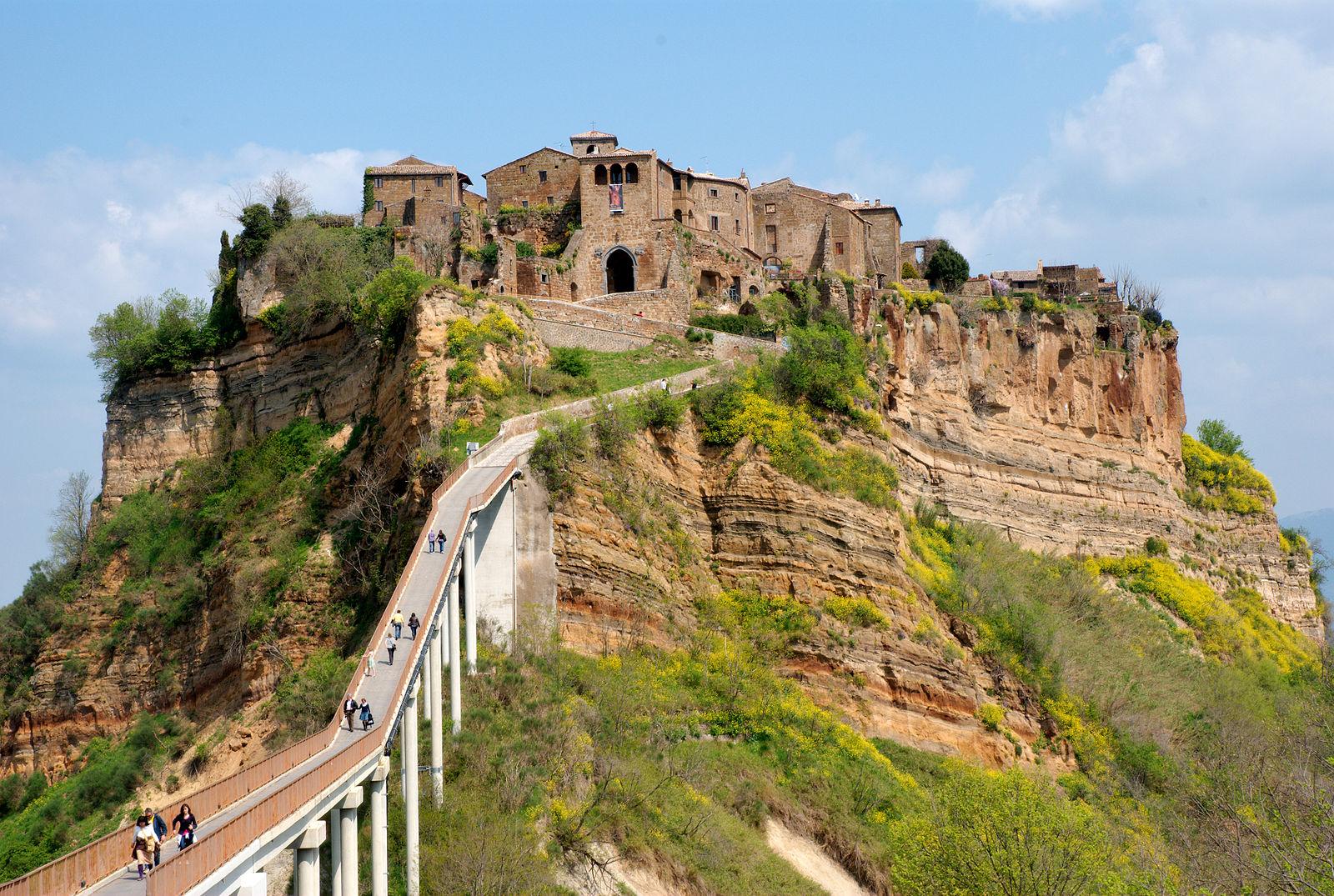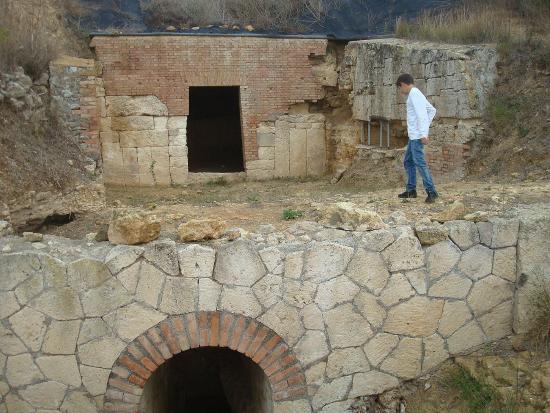4.6: Etruscan (900 BCE – 600 BCE)
- Page ID
- 31798
The Etruscans lived westward of the Tuscany region of what is now Italy, their culture influenced by the trading contacts with the Aegeans and Phoenicians. The Etruscans lived in different settlements along the coast of the Mediterranean Sea, high up in the cliffs, surrounded by tall and thick fortress (4.23) walls. They were an advanced civilization and the only urban city-state in pre-Roman, Italy, even developing their written language. The Etruscan reign started around 900 BCE reign and only lasted 300 years before the Romans sacked and destroyed most of the towns, forcing the Etruscans to flee to the north or be absorbed by the Roman culture.

The Etruscans constructed magnificent tombs dug into the cut rock or hillsides and lavishly decorated them with murals and everyday items for traveling to the afterlife. They incorporated stacked stone into the tomb and the roof. The shapes of the tombs varied depending on status or wealth, and how many individuals buried, large tombs held multiple generations while smaller tombs made for one or two individuals. In Tarquinia, there are over 6,000 tombs (4.24) in the necropolises, over 200 tombs found with painted frescos and household items left for the afterlife. The thousands of tombs in the Tarquinia site appear to be designed by city planners, laid out in a grid with several parks or small squares of open space. The tombs are built similar to homes, with main crossbeams, gabled roofing, stone pillars, and benches (4.25). Several niches were carved into the stone to place items for the afterlife.
READING: Etruscan Necropolises of Cerveteri


The Etruscans painted frescoes on the walls and ceilings in over 200 of the tombs depicting everyday life in Tarquinia. Looking at the frescoes provides a glimpse into their culture, what they ate, and their clothing. There are also plants and trees in the background, giving us an idea of the local plants growing in the area 2500 years ago. The scenes in the frescos (4.26) are fun and lively, showing the right side of life with plenty of food, drink, and music.



